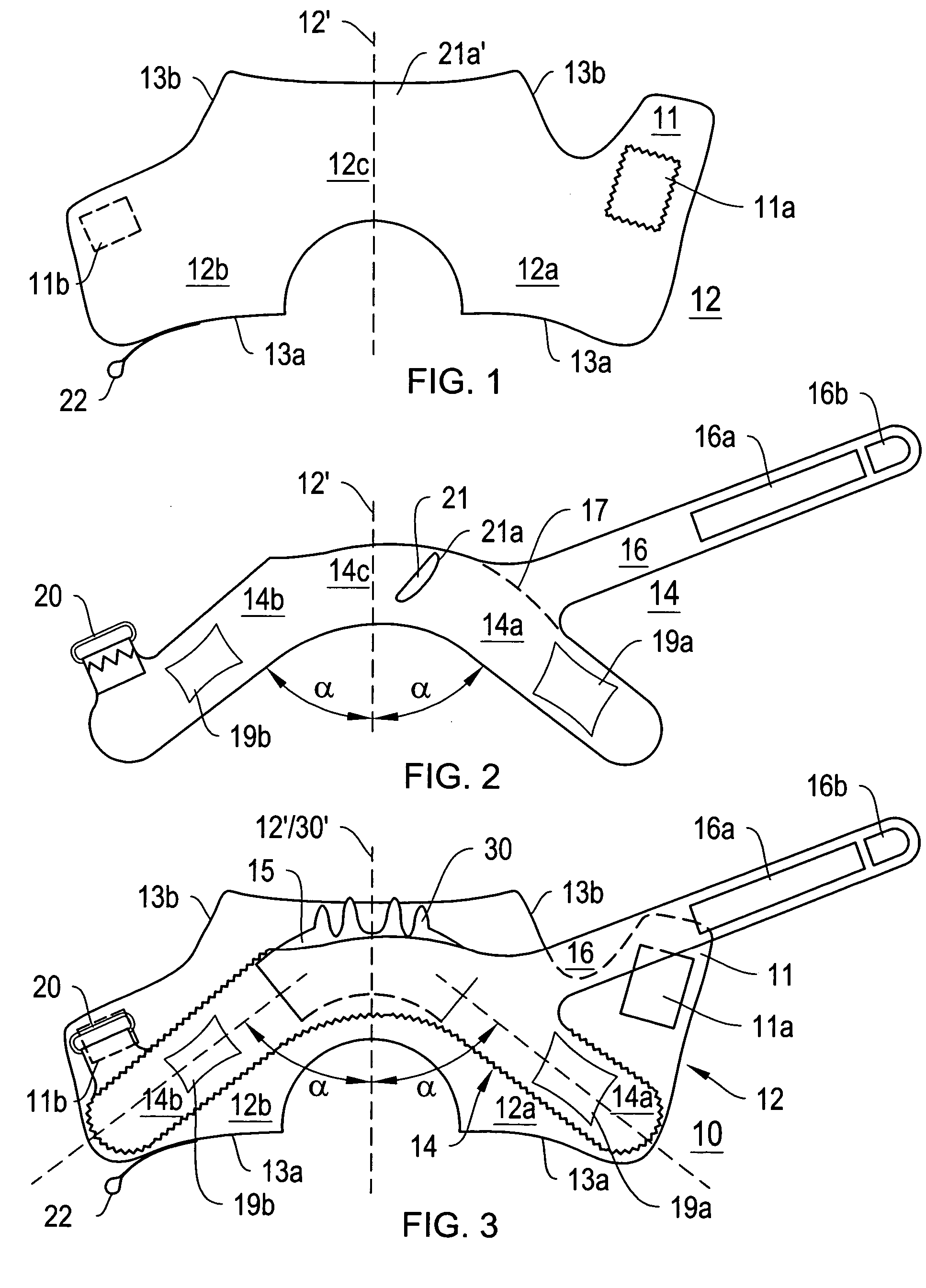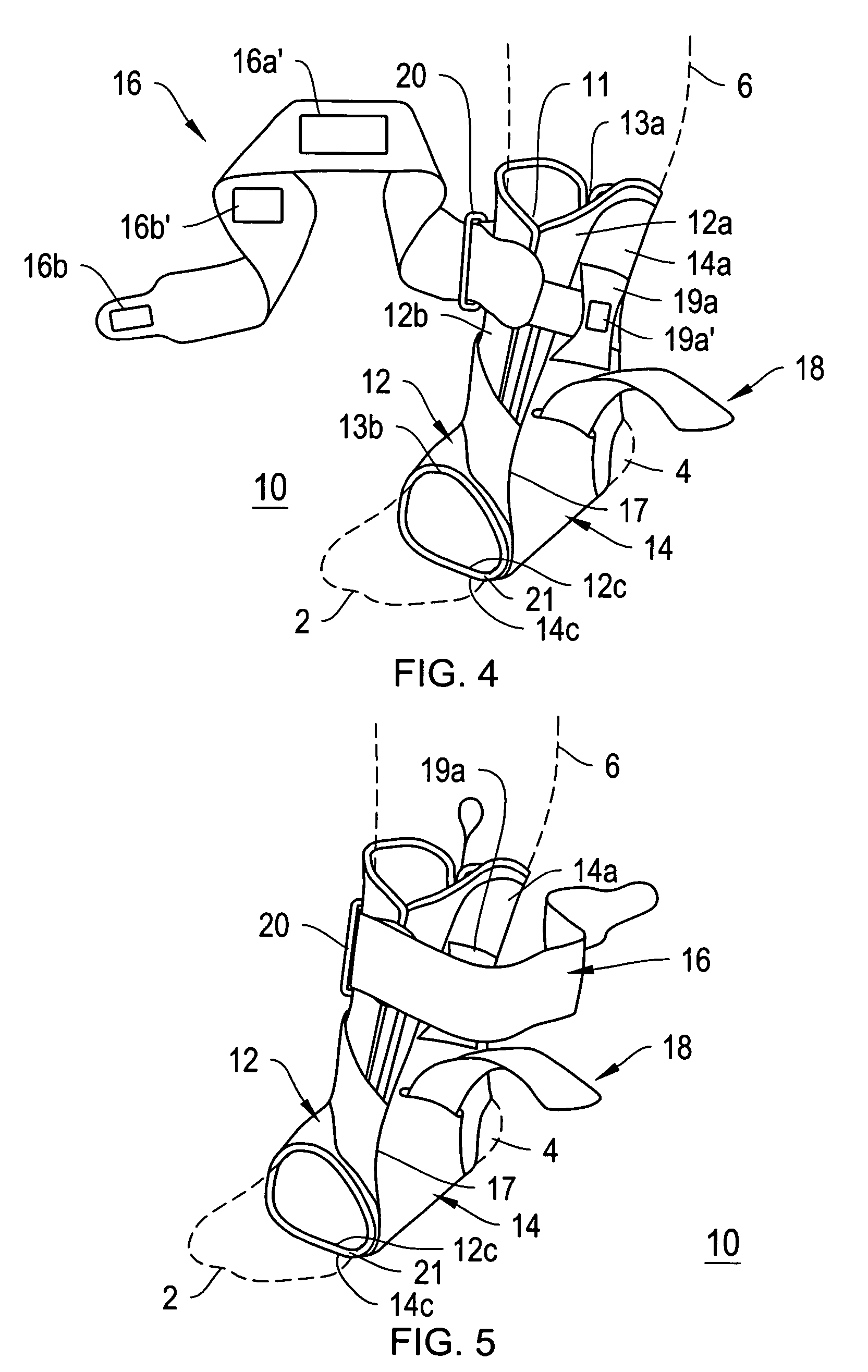Ankle brace
a technology for ankles and ankles, applied in the field of orthopedic devices, can solve the problems of severe ankle sprains, high risk of re-injury, and unstable extremities, and achieve the effect of stabilizing the ankl
- Summary
- Abstract
- Description
- Claims
- Application Information
AI Technical Summary
Benefits of technology
Problems solved by technology
Method used
Image
Examples
Embodiment Construction
[0021] The systems and methods described herein provide a brace that stabilizes the ankle of a user against inversion and eversion without limiting normal plantarflexion and dorsiflexion thereof. More particularly, a soft ankle brace disclosed herein may be made of a pliable material formed as a boot that can be fitted over a user's appendage, such as the ankle. Disposed within or adjacent to the boot is a pliable but resilient shell that provides support to the medial and lateral sides of the user's ankle. The shell may include a connecting center portion that extends under the foot of the user and couples between the lateral support and the medial support. In certain embodiments, the connecting portion includes a plurality of flexible fingers oriented substantially towards the user's toes for yielding to the movement of the user's foot while maintaining the stability and orientation of the lateral and medial supports with respect to the user's ankle.
[0022] The brace further inclu...
PUM
 Login to View More
Login to View More Abstract
Description
Claims
Application Information
 Login to View More
Login to View More - R&D
- Intellectual Property
- Life Sciences
- Materials
- Tech Scout
- Unparalleled Data Quality
- Higher Quality Content
- 60% Fewer Hallucinations
Browse by: Latest US Patents, China's latest patents, Technical Efficacy Thesaurus, Application Domain, Technology Topic, Popular Technical Reports.
© 2025 PatSnap. All rights reserved.Legal|Privacy policy|Modern Slavery Act Transparency Statement|Sitemap|About US| Contact US: help@patsnap.com



